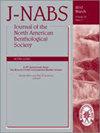Flow in culverts as a potential mechanism of stream fragmentation for native and nonindigenous crayfish species
引用次数: 37
Abstract
Abstract Habitat fragmentation and nonindigenous species are 2 of the leading causes of species loss globally. Thus, scientific information is needed to assess their interactive effects on the biota of lotic ecosystems. We tested the hypothesis that culverts (i.e., pipes) at road–stream intersections elevate flow velocities and differentially slow upstream locomotion of native relative to nonindigenous crayfishes. We: 1) mapped culvert locations and measured their flow; 2) quantified movement of Orconectes propinquus (native) in culverts with velocities of 2, 31, and 42 cm/s; 3) compared the movement of Orconectes rusticus (nonindigenous), O. propinquus, and Orconectes virilis (native) in a culvert with velocity of 30 cm/s; and 4) used a recirculating flume to determine the water velocity that impeded upstream movement (impedance velocity) of each species. Culverts had higher velocities than upstream riffles during baseflow conditions. Orconectes propinquus moved upstream in culverts with flows >30 cm/s, but individuals slipped more frequently and traveled slower than those tested at 2 cm/s. Orconectes rusticus moved upstream faster in culverts and had an impedance velocity ∼6 cm/s faster than O. propinquus (34.0 ± 1.2 cm/s, mean ± 1 SE) and ∼8 cm/s faster than O. virilis (32.0 ± 1.1 cm/s). Culverts impeded crayfish upstream movement differently among species. Nonindigenous species tolerated higher flows, so culverts may create a filter that favors the spread of invasive species. Culverts should be designed to keep water velocity <30 cm/s to mitigate flow effects on crayfish passage, thereby minimizing the possible combined effects of fragmentation and nonindigenous species introductions.涵洞水流作为本地和非本地小龙虾物种溪流破碎的潜在机制
生境破碎化和非本地物种是全球物种消失的两个主要原因。因此,需要科学的信息来评估它们对生态系统生物群的相互作用。我们测试了一个假设,即道路溪流交叉口的涵洞(即管道)提高了流速,并不同地减缓了本地小龙虾相对于非本地小龙虾的上游运动。我们:1)绘制涵洞位置并测量其流量;(2)以2、31和42 cm/s的速度量化了土鳖(原生)在涵洞中的运动;3)在30 cm/s的速度下,比较了非土种、土种和土种在涵洞内的移动;4)利用循环水槽确定阻碍各物种上游运动的水流速度(阻抗速度)。在基流条件下,涵洞的流速高于上游的裂缝。在流速>30 cm/s的涵洞中,扁尾螺逆流而上,但与流速为2 cm/s的涵洞相比,个体的滑移频率更高,移动速度更慢。Orconectes rusticus在涵洞中向上游移动较快,阻抗速度比O. propinquus(34.0±1.2 cm/s,平均±1 SE)快~ 6 cm/s,比O. virilis(32.0±1.1 cm/s)快~ 8 cm/s。涵洞对小龙虾上游运动的阻碍在不同种类之间存在差异。非本地物种可以忍受更高的流量,所以涵洞可能创造一个过滤器,有利于入侵物种的传播。涵洞的设计应保持水流速度<30 cm/s,以减轻水流对小龙虾通道的影响,从而最大限度地减少破碎化和外来物种引入的可能的综合影响。
本文章由计算机程序翻译,如有差异,请以英文原文为准。
求助全文
约1分钟内获得全文
求助全文

 求助内容:
求助内容: 应助结果提醒方式:
应助结果提醒方式:


